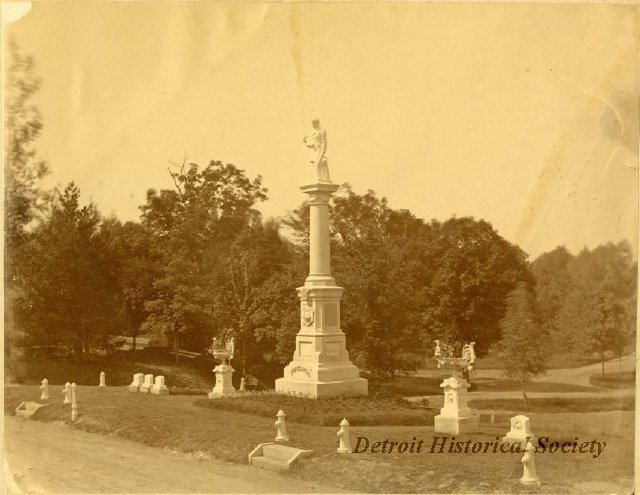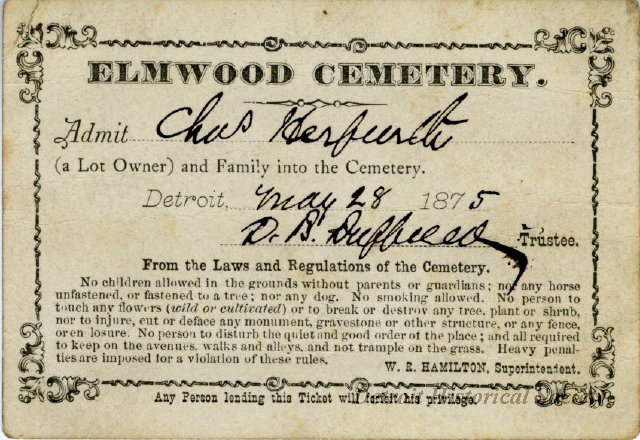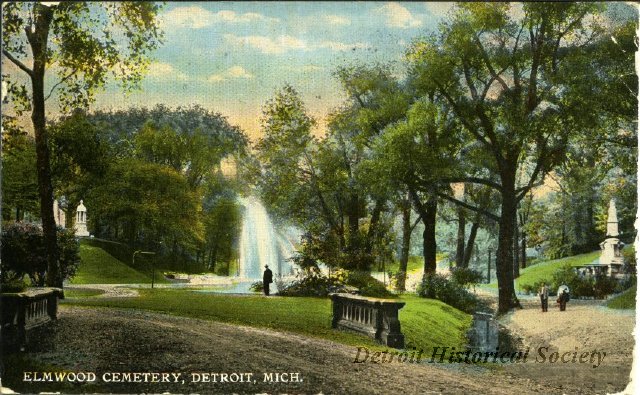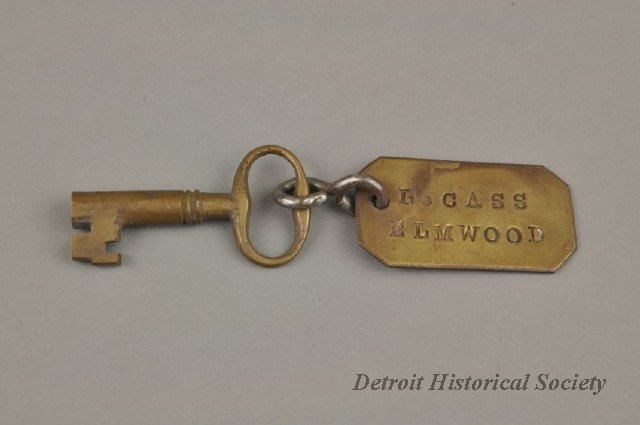A Fitting Place of Burial
Detroit’s Elmwood Cemetery was established in 1846, and it endures as the state’s oldest non-denominational cemetery. It began with 42 acres divided from a farm in what was then Hamtramck township on the periphery of Detroit. Over the years, the cemetery has grown to its present size–about 86 acres which stretch along Mt. Elliott Street. In the 1890s, the cemetery’s grounds were re-designed based on a lengthy list of recommendations and guidelines put forth in an 1891 letter by landscape architect Frederick Law Olmstead, famous for his work on New York's Central Park and partial involvement in Detroit's Belle Isle. Olmstead's detailed letter to Elmwood's trustees included such recommendations as eliminating non-native trees and shrubs, and blending the roads into the natural contours of the landscape. In the letter, Olmstead also explained the philosophy behind his recommendations; he sought to preserve Elmwood Cemetery as an a rural refuge even as the city grew to surround it. The letter was published by the cemetery in an 1895 booklet that also included its history and rules. The Detroit Historical Society holds a copy of this booklet in its collection.
The graves of generations of prominent Detroiters are in Elmwood. Some of the names on the headstones–like those of Governor Lewis Cass or Mayor John R. Williams–have also been memorialized on the city’s street signs. In fact, a key relating to Cass' burial plot is also part of the Detroit Historical Society's collection. Elmwood is also the final resting place for more modern figures as well, such as Mayor Coleman A. Young, Fred “Sonic” Smith of the MC5, and radio personality Martha Jean “The Queen” Steinberg. The cemetery also contains impressive monuments, such as the 1876 Firemen's Monument which consists of a figure of a fire chief mournfully holding his helmet at his side atop a column.
 This monument--seen here in a c. 1880 photo--was erected by the Firemen's Fund in 1876. The surrounding lot is still reserved for members of the organization.
This monument--seen here in a c. 1880 photo--was erected by the Firemen's Fund in 1876. The surrounding lot is still reserved for members of the organization.
These days the Historic Elmwood Foundation offers regular programming to attract visitors to the cemetery, however attitudes were different in the 19th century. According to Elmwood’s 1886 rules, the park was only open to the public on Sundays. During the rest of the week, visits were limited to solely the families of lot owners, who had to acquire tickets from the cemetery’s superintendent or trustees. The Detroit Historical Society holds several such tickets in its collection. The rules adopted by the cemetery in 1894 make no such mention of requiring tickets, suggesting the practice had vanished around the time of the remodeling. Indeed, in his letter Olmstead urged that regard for the cemetery be established "in the minds of the people who have personally known nothing of its dead," who simply appreciate the grounds for their "natural rural scenery."
 This 1875 admission ticket was issued to the family of Charles Herfurth. In the following decades, changing attitudes about the cemetery's role made such passes unnecessary.
This 1875 admission ticket was issued to the family of Charles Herfurth. In the following decades, changing attitudes about the cemetery's role made such passes unnecessary.
Other items relating to Elmwood, including photos, maps, postcards, and bills for plots, can be viewed in our online collection. November 19, 2015 Update: In the original version of this article, we incorrectly referred to the Elmwood Cemetery key as being to Lewis Cass' mausoleum, as it was described in its original donation record. However--as several wise readers noted--Cass is not buried in a mausoleum. Consequently, we have explored the provenance of this artifact in the new post "The Mystery of the Missing Mausoleum."



